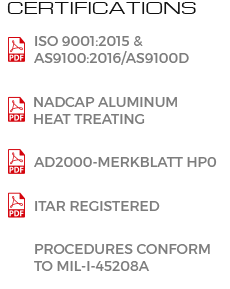
 |
The Metal Spinning ProcessIn metal spinning, the forming process is accomplished by the use of a spinning lathe. The lathe resembles a woodturning or pattern maker's lathe but is typically of a sturdier construction.The material to be spun is first circle sheared to the required diameter and is then transferred to the lathe. Mounted on the lathe spindle is a spin form or mandrel, which duplicates the inside contour of the part to be produced. On the tailstock end of the lathe, a live center is installed and a tail block or "follower" is attached to the center. The circle of metal is then placed between the tail block and spin form and the tailstock is advanced to securely hold the circle against the spin form. At this point, the lathe is started and all components rotate simultaneously. The spinning process is accomplished by the use of pressure against the rotating circle from a "spin tool" which may take the form of a roller mounted on a lever, a hand tool or a hydraulically powered roller (which allows the forming of thicker or less formable alloys). The process, difficult to describe by text, is shown in the video below. Advantages of Metal SpinningDue to the method of forming, repeated passes with a roller or hand tool, the spun metal product typically exhibits higher strength characteristics than machined or drawn components.Tooling can be quickly produced, even in sizes exceeding four feet in diameter. In addition, tooling cost is significantly lower than other choices for manufacture as the forming component is generally a stock roller or hand tool. The only requirements are the spin form and any necessary auxiliary fixtures, making metal spinning an appropriate candidate for sheet metal prototyping. Since the tooling can be tailored to the quantity of parts anticipated to be produced, costs can be kept in-line with part life expectancy. Short runs can be produced on soft tooling (phenolic or mild steel tools) whereas longer runs or more complex shapes may require hardened tools (A2, 4140, etc.). With the addition of CNC spinning equipment, larger quantities of parts can be produced with repeatable features. In many cases this allows metal spinning to remain competitive with deep drawing or stamping. The constant changes often required in new product development make the low start up costs associated with metal spinning the ideal choice for sheet metal prototyping. Koch Metal Spinning would be pleased to have you visit our facility and see, first hand, the advantages of using metal spinning for your product. |



